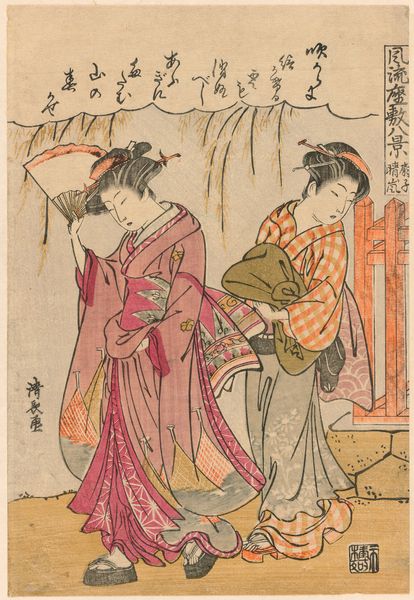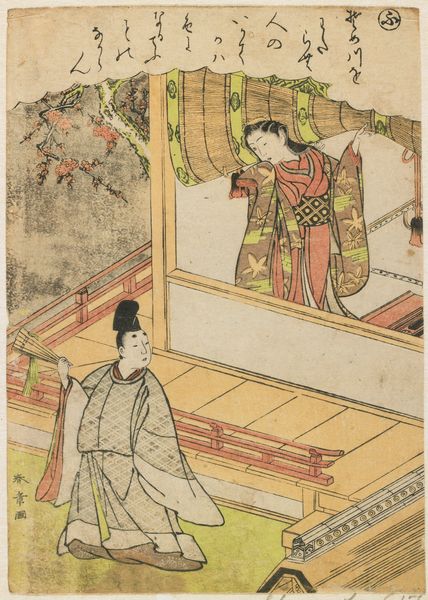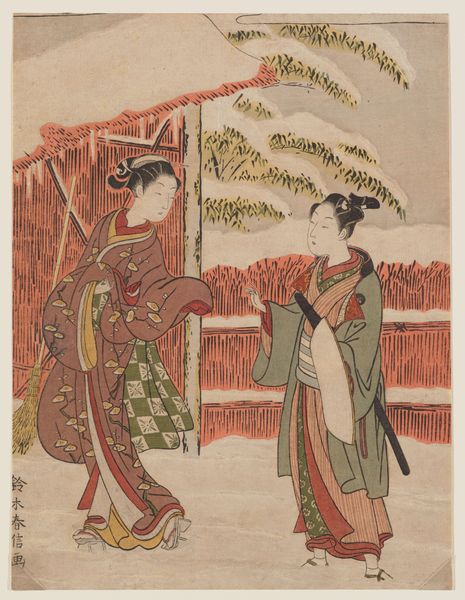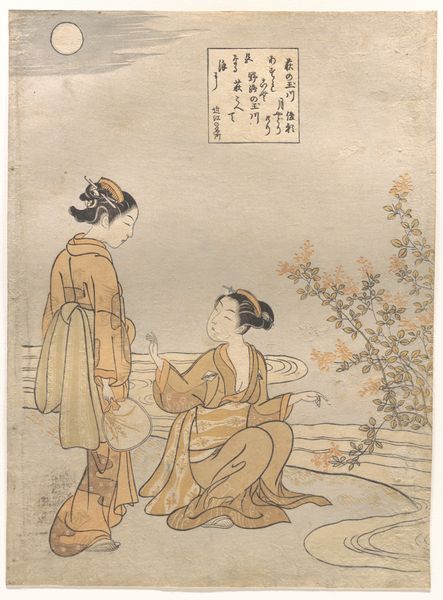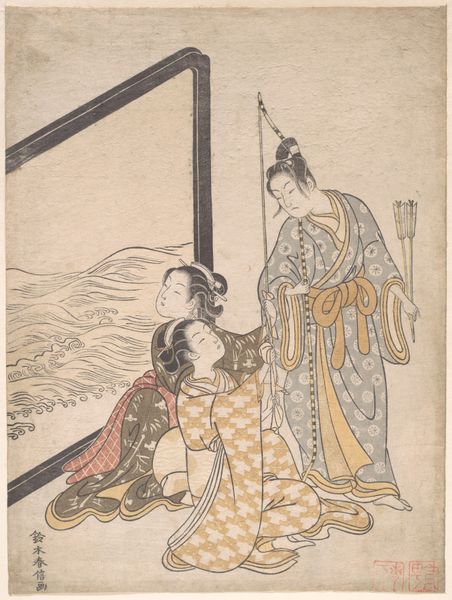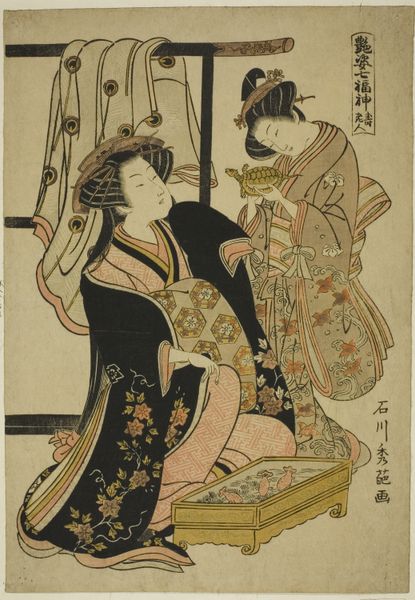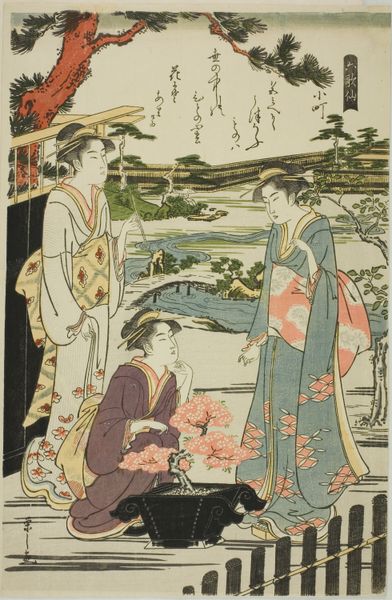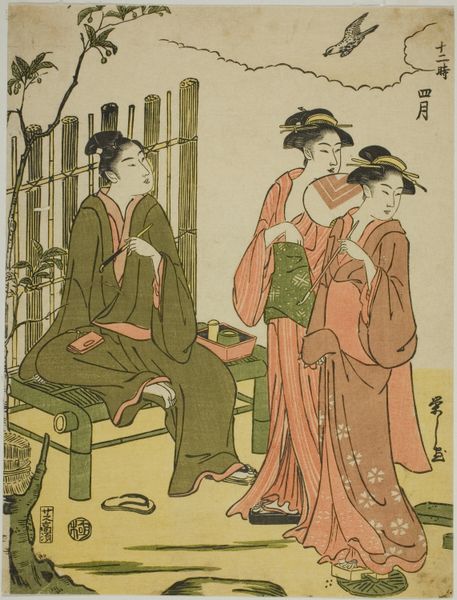
No. 6: Tama River of Koyasan in Kii Province, from the series "Six Jewel Rivers of the Floating World (Ukiyo Mu Tamagawa)" c. 1769
0:00
0:00
# print
#
asian-art
#
landscape
#
ukiyo-e
#
figuration
#
genre-painting
Dimensions: 12 1/4 × 5 1/2 in.
Copyright: Public Domain
Kitao Shigemasa’s woodblock print presents us with two women crossing a bridge over the Tama River, framed by a weeping willow. In Japanese art, the willow is often linked with themes of farewells, ghosts, and the transient nature of life, due to its association with drooping branches, and flowing water beneath. The bridge itself, a common motif in Japanese art and culture, signifies passage and transition, a link between two states of being. Think of similar depictions of bridges as symbols of transition in Western art, such as in medieval allegories of life's journey. The figures appear poised, perhaps engaged in dialogue. The woman carrying flowers brings to mind the cyclical rhythms of nature and the impermanence that underscores our existence. Consider how such imagery resonates across cultures, tapping into our collective consciousness. The emotional weight carried by these symbols—water, tree, bridge, and flowers—has an enduring power, echoing through time, their forms evolving yet their essence remaining profoundly human.
Comments
No comments
Be the first to comment and join the conversation on the ultimate creative platform.

